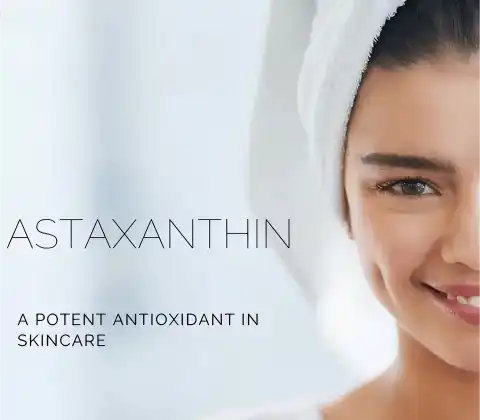How does Astaxanthin Powder provide antioxidant benefits?
Astaxanthin powder, derived from the microalgae Haematococcus pluvialis, has gained significant attention in the health and wellness industry due to its remarkable antioxidant properties. This powerful carotenoid pigment, responsible for the vibrant red color in certain marine life, offers a wide array of health benefits that extend far beyond its aesthetic qualities. As a potent antioxidant, astaxanthin powder has the unique ability to neutralize harmful free radicals and reduce oxidative stress throughout the body. Its molecular structure allows it to span cell membranes, providing comprehensive protection to cellular components, including lipids, proteins, and DNA. This article delves into the mechanisms behind astaxanthin powder's antioxidant prowess, exploring how it combats oxidative damage, supports cellular health, and contributes to overall well-being. By understanding the science behind this remarkable compound, we can better appreciate its potential in promoting longevity and vitality.

How Astaxanthin Powder Neutralizes Free Radicals in the Body?
Scavenging Reactive Oxygen Species
Astaxanthin powder exhibits its antioxidant properties primarily through its ability to scavenge reactive oxygen species (ROS) effectively. These highly reactive molecules, including superoxide, hydrogen peroxide, and hydroxyl radicals, can cause significant damage to cellular structures if left unchecked. The unique molecular structure of astaxanthin, with its long chain of conjugated double bonds, allows it to donate electrons to neutralize these free radicals without becoming a pro-oxidant itself. This process effectively terminates the chain reaction of oxidative damage, preventing the propagation of free radical-induced harm throughout the body. Studies have shown that astaxanthin powder can neutralize multiple types of ROS simultaneously, making it a versatile and powerful antioxidant supplement for overall health maintenance.
Enhancing Endogenous Antioxidant Systems
Beyond its direct free radical scavenging capabilities, Haematococcus Pluvialis Powder astaxanthin powder also plays a crucial role in enhancing the body's endogenous antioxidant systems. It has been observed to upregulate the production and activity of key antioxidant enzymes such as superoxide dismutase (SOD), catalase, and glutathione peroxidase. These enzymes form the frontline defense against oxidative stress, converting harmful free radicals into less reactive molecules. By boosting the efficiency of these natural antioxidant mechanisms, astaxanthin powder creates a synergistic effect, amplifying the body's overall antioxidant capacity. This dual-action approach – direct neutralization of free radicals and enhancement of internal antioxidant defenses – makes astaxanthin powder a comprehensive solution for combating oxidative stress and its associated health challenges.
Protecting Cell Membranes from Lipid Peroxidation
One of the most significant contributions of astaxanthin powder to cellular health is its ability to protect cell membranes from lipid peroxidation. The lipid bilayer of cell membranes is particularly vulnerable to oxidative damage due to its high concentration of polyunsaturated fatty acids. Astaxanthin's unique molecular structure allows it to span the entire width of the cell membrane, providing protection on both the inner and outer surfaces. This positioning enables astaxanthin to intercept free radicals before they can initiate the lipid peroxidation cascade, thereby maintaining membrane integrity and fluidity. By preserving the structural and functional integrity of cell membranes, astaxanthin powder helps ensure optimal cellular function, communication, and longevity, contributing to overall tissue and organ health.
Cellular Mechanisms Behind Astaxanthin Powder Antioxidant Activity
Modulation of Nrf2 Pathway
Astaxanthin powder exerts its antioxidant effects through various cellular mechanisms, with one of the most significant being the modulation of the Nrf2 (Nuclear factor erythroid 2-related factor 2) pathway. Nrf2 is a master regulator of the cellular antioxidant response, controlling the expression of over 200 genes involved in detoxification and antioxidant defense. Astaxanthin has been shown to activate Nrf2, promoting its translocation to the nucleus where it binds to Antioxidant Response Elements (ARE) in the DNA. This activation leads to the increased production of phase II detoxification enzymes and antioxidant proteins, such as heme oxygenase-1 (HO-1), NAD(P)H:quinone oxidoreductase 1 (NQO1), and γ-glutamylcysteine synthetase (γ-GCS). By enhancing the Nrf2-mediated antioxidant response, astaxanthin powder provides a comprehensive and long-lasting boost to the body's ability to combat oxidative stress at the cellular level.
Mitochondrial Protection and Bioenergetics
Another crucial aspect of astaxanthin powder's antioxidant activity lies in its ability to protect mitochondria and enhance cellular bioenergetics. Mitochondria, often referred to as the powerhouses of the cell, are major sites of ROS production due to the electron transport chain in oxidative phosphorylation. Astaxanthin has been found to accumulate in mitochondrial membranes, where it can directly scavenge ROS and prevent oxidative damage to mitochondrial DNA and proteins. This protection is vital for maintaining efficient ATP production and overall cellular energy metabolism. Furthermore, astaxanthin powder has been shown to improve mitochondrial function by increasing the activity of key enzymes in the electron transport chain, such as cytochrome c oxidase. By safeguarding mitochondrial integrity and enhancing energy production, astaxanthin contributes to improved cellular resilience and functionality across various tissues and organs.
Anti-inflammatory Effects through NF-κB Inhibition
The antioxidant benefits of astaxanthin powder extend beyond direct free radical scavenging to include potent anti-inflammatory effects, primarily through the inhibition of the NF-κB (Nuclear Factor kappa-light-chain-enhancer of activated B cells) pathway. Chronic inflammation and oxidative stress are closely interlinked, often exacerbating each other in a vicious cycle. Astaxanthin has been demonstrated to suppress the activation and nuclear translocation of NF-κB, a key transcription factor involved in the inflammatory response. This inhibition leads to reduced expression of pro-inflammatory cytokines, such as TNF-α, IL-1β, and IL-6, as well as decreased production of inflammatory mediators like cyclooxygenase-2 (COX-2) and inducible nitric oxide synthase (iNOS). By mitigating inflammation at the molecular level, astaxanthin powder helps break the cycle of oxidative stress and inflammation, contributing to overall cellular health and systemic well-being.
Safe Dosage and Practical Applications of Astaxanthin Powder for Oxidative Stress Support
Recommended Dosage for Different Health Goals
Determining the optimal dosage of astaxanthin powder is crucial for maximizing its antioxidant benefits while ensuring safety. While there is no universally established dosage, clinical studies have typically used doses ranging from 2 to 12 mg per day for various health applications. For general antioxidant support and maintenance of overall health, a daily dose of 4-6 mg is often recommended. However, for specific health goals or conditions, higher doses may be appropriate. For example, athletes seeking to improve exercise performance and recovery might benefit from 12 mg daily, while those targeting skin health or UV protection might find 6-8 mg sufficient. It's important to note that astaxanthin is fat-soluble, so consuming it with a meal containing healthy fats can enhance absorption. As with any supplement, it's advisable to start with a lower dose and gradually increase as needed, always under the guidance of a healthcare professional.
Synergistic Effects with Other Antioxidants
Haematococcus Pluvialis Powder astaxanthin powder's antioxidant benefits can be further enhanced when combined with other complementary antioxidants, creating synergistic effects that provide comprehensive oxidative stress support. One notable combination is astaxanthin with omega-3 fatty acids, particularly EPA and DHA. This pairing not only improves the stability and bioavailability of both compounds but also offers enhanced cardiovascular and neurological protection. Astaxanthin also works well in conjunction with other carotenoids like lutein and zeaxanthin for superior eye health benefits. Additionally, combining astaxanthin with vitamin E has shown promising results in skin health studies, with the two antioxidants working together to protect against UV-induced damage and improve skin elasticity. When formulating antioxidant supplements or functional foods, incorporating astaxanthin powder alongside these complementary nutrients can provide a more robust and multifaceted approach to combating oxidative stress.
Targeted Applications in Health and Wellness Products
The versatility of astaxanthin powder makes it an excellent ingredient for a wide range of health and wellness products targeting oxidative stress support. In the nutraceutical industry, astaxanthin is increasingly being incorporated into multi-antioxidant formulas, sports nutrition supplements, and cardiovascular health products. Its ability to cross the blood-brain barrier also makes it a valuable component in cognitive health supplements. In the cosmetics sector, astaxanthin-infused skincare products are gaining popularity for their anti-aging and photoprotective properties. The food and beverage industry is exploring astaxanthin as a natural colorant and functional ingredient in products like energy drinks, fortified waters, and nutrient-dense snacks. For maximum efficacy, product formulators should consider the stability of astaxanthin under different processing conditions and its interaction with other ingredients. By leveraging the potent antioxidant properties of astaxanthin powder in targeted applications, manufacturers can create innovative products that address specific health concerns related to oxidative stress.
Conclusion
Astaxanthin powder stands out as a powerful antioxidant with multifaceted benefits for human health. Its unique molecular structure and ability to protect cells at multiple levels make it an invaluable tool in the fight against oxidative stress. From neutralizing free radicals to enhancing endogenous antioxidant systems and protecting cellular components, astaxanthin's mechanisms of action are both diverse and comprehensive. As research continues to uncover new applications and synergies, astaxanthin powder is poised to play an increasingly important role in health and wellness products aimed at promoting longevity and vitality.
At Avans NutriHealth Co., Ltd., we are committed to providing high-quality astaxanthin powder and other plant-based nutritional supplements to support your health and wellness goals. As a leading manufacturer and supplier in China, we combine cutting-edge research with stringent quality control to deliver products that meet the highest industry standards. Our team of experts is dedicated to offering comprehensive technological support and personalized solutions to meet your specific needs. For more information about our astaxanthin powder and other products, please contact us at Lillian@avansnutri.com. Choose Avans NutriHealth for a reliable partner in your journey towards optimal health and well-being.
FAQ
Q: What makes astaxanthin powder a unique antioxidant?
A: Astaxanthin's unique molecular structure allows it to span cell membranes, providing comprehensive protection against oxidative stress both inside and outside cells.
Q: How does astaxanthin powder compare to other antioxidants?
A: Astaxanthin is considered one of the most potent natural antioxidants, with studies showing it to be several times more effective than vitamin C, vitamin E, and beta-carotene in neutralizing certain types of free radicals.
Q: Can astaxanthin powder help with exercise recovery?
A: Yes, astaxanthin has been shown to reduce muscle damage and inflammation associated with intense exercise, potentially improving recovery times and performance.
Q: Is astaxanthin powder safe for long-term use?
A: Clinical studies have shown astaxanthin to be safe for long-term consumption at recommended doses, with no significant side effects reported in most individuals.
Q: How quickly can I expect to see benefits from taking astaxanthin powder?
A: While some effects may be noticeable within a few weeks, most studies on astaxanthin supplementation have been conducted over periods of 4-12 weeks for optimal results.
References
1. Fakhri, S., Abbaszadeh, F., Dargahi, L., & Jorjani, M. (2018). Astaxanthin: A mechanistic review on its biological activities and health benefits. Pharmacological Research, 136, 1-20.
2. Davinelli, S., Nielsen, M. E., & Scapagnini, G. (2018). Astaxanthin in skin health, repair, and disease: A comprehensive review. Nutrients, 10(4), 522.
3. Ambati, R. R., Phang, S. M., Ravi, S., & Aswathanarayana, R. G. (2014). Astaxanthin: sources, extraction, stability, biological activities and its commercial applications—a review. Marine drugs, 12(1), 128-152.
4. Kidd, P. (2011). Astaxanthin, cell membrane nutrient with diverse clinical benefits and anti-aging potential. Alternative Medicine Review, 16(4), 355-364.
5. Liu, X., & Osawa, T. (2007). Astaxanthin protects neuronal cells against oxidative damage and is a potent candidate for brain food. Forum of Nutrition, 61, 129-135.
6. Chew, B. P., & Park, J. S. (2004). Carotenoid action on the immune response. The Journal of Nutrition, 134(1), 257S-261S.



